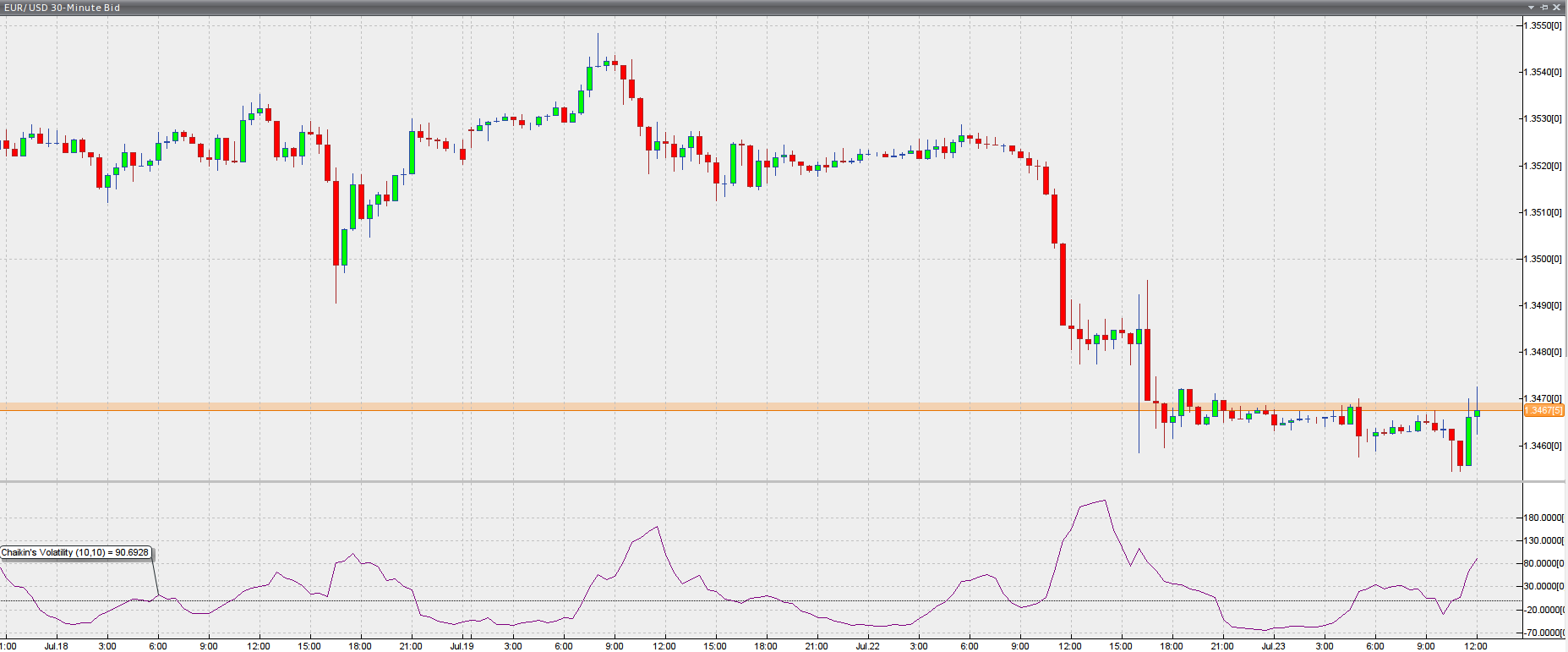Chaikins Volatility Indicator
This lesson will cover the following
- Definition
- Calculation
- Interpretation
Marc Chaikins volatility indicator measures volatility by comparing the spread between the currencys high and low price over a certain number of periods. By doing so, it quantifies volatility as a widening of the range between the prices opposite extreme levels.
Chaikins Volatility is basically the difference between two moving averages of a volume-weighted accumulation-distribution line. Its calculation encompasses an exponential moving average (usually with a 10-period trackback) of the difference between the high and low for each period, followed by estimating the percentage change in the exponential moving average over further n-periods (again usually 10).
The latter calculation should look like this: [EMA (H-L) – EMA (H-L n-periods ago)] / EMA (H-L n-periods ago) * 100
Generally, traders use Chaikins Volatility indicator as rises and dips in its value tend to reflect market sentiment at tops and bottoms, as well as the following lack of enthusiasm in market participants.
The indicator usually peaks sharply ahead of market tops and bottoms, which is often followed by a decline in volatility as market players temporarily lose interest. Low volatility is therefore typical for tight trading ranges.
As the market is breaking out of the trading range, volatility increases, but the gain is not substantial.
It then tends to mark a more significant rise as the price exceeds the most recent high and a sharp gain is later often observed shortly before a new market top. However, as the up-move again enters its exhaustion phase and loses momentum, volatility usually declines significantly, implying a reversal is likely to occur. You can see the indicator visualized in a trading platform below.
Chart source: VT Trader
